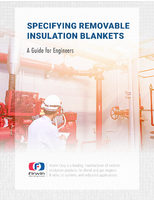Shipborne (Mobile) Laser Scanning on NOAA Bay Hydro
Shipborne (Mobile) Laser Scanning on NOAA Bay Hydro
Laser Scanning System -The laser sensor uses time-of-flight principles of near infrared pulses.
Laser scanning has already shown its outstanding advantages in acquiring 3D information on an object's surface in many different applications. For laser scanning, a highly collimated laser beam is scanned over a surface with a predefined angle in a regular scan pattern. While scanning, the distance to the object is measured by measuring the time of flight of the laser signal with high precision. Different commercial systems are available with a broad range of specifications. The specifications differ in measurement range, field-of-view, measurement accuracy, data acquisition beam divergence and synchronization.
The LMS-Z420i laser scanner used in the Bay Hydro test offers an angular resolution of the mirror wheel diversion of 0.0025°, a divergence of the laser beam of 0.25 mrad and a distance measuring accuracy of 10 mm. The angle measuring accuracy of the scanner depends on one hand the angular resolution, on the other hand the beam divergence. The measurement range of the scanner is 1,000 meters; the measurement rate is 8,000 points per second while the field of view of the line scan was 80 degrees with a step size between points of 0.120°. The seamless time stamping of the data was accomplished by a timing mechanism that provided real-time-clock information to each laser range measurement. The power requirements are 12 - 24VDC. For optimal signal processing the last return of the laser pulse was used to ignore rain, sleet and snow. The instrument is nitrogen purged and sealed for optimal environmental protection.
The primary output delivered by a scanning laser system is a point cloud representing a sampled replica of the object's surface. The point cloud is composed usually of a very large number of points or vertices and, for most of the systems; each vertex corresponds to a single laser range measurement.
The applications in which laser scanners are already widely used include documentation and reconstruction in archaeology, architecture, and preservation of cultural heritage, city modeling based on scan data and image data, volumetric measurements in mining, dimensional measurements of large structures in construction, civil projects, airborne data acquisition (airborne laser scanning) for DEM and DTM generation, to name only a few. The post-processing procedure varies widely for different applications and often includes data filtering, modeling with geometric primitives, meshing or triangulating the point cloud to obtain a surface description, and texturing.
In many applications the user is not only interested in geometrical information, but also in additional information on the object's surface. For this purpose the point cloud is frequently complemented by additional vertex descriptors containing information on, e.g., surface reflectivity or surface color. Almost all laser scanners provide, beside the geometry data, also provide information of the signal strength of the echo signal, commonly addressed as intensity data, which can be calibrated to deduce a measure for the reflectivity of the object's surface at the laser wavelength. Some laser sensors provide with every laser measurement also color information by converting the ambient light in the direction of the laser beam into an RGB (red-green-blue). The geometrical data and the additional vertex descriptors are acquired synchronously and sequentially and the spatial resolution of the additional data can thus not be higher.
In order to have texturing data with a higher resolution than the laser data, high resolution digital cameras can be used additionally. Texturing 3D models generated from laser scan data with image data is well established and many of the 3D data processing packages provide at least some means for texturing the surface of a 3D model. However, using images of a camera without prior knowledge of its position and orientation requires, for example, manual definition of tie points in both the scan data and the image to calculate the image parameters. Integrating a high-resolution calibrated, time synchronized camera into a laser scanning system provides a very efficient, convenient, and powerful system for automatically generating accurately textured high-resolution 3D models.
The following illustration shows the main components of a system for mobile laser scanning in a block diagram. A key component of the laser scanner for the collection of 3D data is the local coordinate system of the laser scanner. Laser scanners based on the use of short laser pulses provide reliable data acquisition over a long range. This characteristic remains effective under adverse environmental condition and in difficult measuring situations. The high sensitivity of the laser scanners pulse time-of-flight method makes it possible to receive to measuring data also from badly reflected targets such as on dark or easily reflecting surfaces.
Mobile Laser Scanning
The combination of fast 2D-Laser scanners with the position and orientation systems of high accuracy opens a new range of application for surveying. The different requirements of mobile laser scanners are determined by the operational areas and the respective carrier platforms - vehicles, ships, and airplanes. New terms are being introduced such as TLS (terrestrial laser scanning) for terrestrial or stationary earthbound laser scanning and ALS for (airborne lasers scanning) for the air-based laser-based data acquisition the mobile laser Scanning (MLS).
About Riegl
Riegl's headquarters are located in Horn, Austria. Riegl has always been dedicated to the highest performance, quality, reliability and longevity of its products and services. Strict adherence to international quality assurance standards is a matter of course for Riegl. Riegl's 3D terrestrial laser scanner business is based upon the company's 28 year heritage in research, development and manufacture of time-of-flight based optical radar systems. Our products are used for ground based and airborne survey, industrial process control, altimetry and aerospace applications.
Riegl's many different 3D scanners offer a wide array of performance characteristics and serve as a platform for continuing innovation in the 3D laser scanning business. An example is the integration of the 3D laser scanner with the Photogrammetric camera resulting in the synergistic benefits of greater speed and higher accuracies.
Today Riegl is recognized as the performance leader in the mining, industrial process control, civil infrastructure, mobile mapping and other large scale asset markets. The instruments are well known for their ruggedness and reliability under demanding environmental conditions.
More Information
Jim van Rens
Riegl USA, Inc.
7035 Grand National Drive
Suite 100
Orlando, FL 32819
Phone 407 248 9927
Fax 407 248 2636
Cell 321 689 3521
www.rieglusa.com
jvanrens@rieglusa.com
Serving the North American Market since 1993




